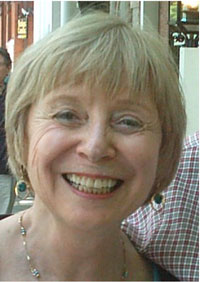– Andrew Samuels – “The Future of Jungian Analysis: Strengths, Weaknesses, Opportunities, Threats” and “The ‘Activist Client’: Social Responsibility, The Political Self, and Clinical Practice in Psychotherapy and Psychoanalysis”
– Stavros Charalambides – “The Group in Two Minds: Sibling and Group-as-a-Whole Transference and Countertransference”
– Janine de Peyer – “Traversing the Ineffable: Commentary on Sharon Farber’s ‘Becoming a Telepathic Tuning Fork'”
– Mary Lynne Ellis – “Mourning’s Dissonance: Who am I Who Mourns and Whom Do I Mourn? “
– Erik Mansager – “Adler and Maslow in Collaboration: Applied Therapeutic Creativity”
– Doris Silverman – “The Sexiness of Marilyn Minter,” “Insecure Attachment and Their Intermingling Transferences,” and “Psychosexual Stages of Development”
The Future of Jungian Analysis: Strengths, Weaknesses, Opportunities, Threats
By Andrew Samuels (UK)
Journal of Analytical Psychology, Volume 62, Number 5, p. 636-649, 2017.
Using a methodology derived from management and organizational studies, the author reviews the future of Jungian analysis. The methodology is termed SWOT – strengths, weaknesses, opportunities, threats. A selected list in each of these categories is presented. The author is transparent in allowing for the fact that the paper not only derives from a public lecture on the topic, but also retains the immediacy and the contrarian and opinionated style of such a lecture.
Link: http://onlinelibrary.wiley.com/doi/10.1111/1468-5922.12351/full
Response to Samuels: Kawai, T. (2017) The historicity and potential of Jungian analysis: another view of ‘SWOT’. Journal of Analytical Psychology, 62:5, pp. 650-657.
Link: http://onlinelibrary.wiley.com/doi/10.1111/1468-5922.12352/full
Reply to Response: Samuels A. (2017) Brief remarks on Toshio Kawai’s response to my SAP lecture. Journal of Analytical Psychology, 62:5, pp. 658-659.
Link: http://onlinelibrary.wiley.com/doi/10.1111/1468-5922.12353/full

The “Activist Client”: Social Responsibility, The Political Self, and Clinical Practice in Psychotherapy and Psychoanalysis
By Andrew Samuels (UK)
Psychoanalytic Dialogues, Volume 27, Number 6, p. 678-693, 2017.
The idea of the “activist client” is intended to be taken both literally and metaphorically—applying to some extent to a wider range of clients than actual activists. The paper develops a set of ideas about a “political turn” in psychotherapy and psychoanalysis, using the tag “the inner politician.” There is a focus on working directly with political material in the session, and the pros and cons of this practice are reviewed. Wider issues such as social responsibility and social spirituality are discussed, as well as an exploration of the limits of individual responsibility. Some specific topics covered in the paper include the political roots of depression, difficulties with the concept of the therapeutic alliance from the point of view of democratic perspectives on clinical work, and a challenge to the unquestioned valuing of empathy (based on a reading of therapy though a Brechtian lens). There are numerous clinical examples.
Link: http://www.tandfonline.com/doi/full/10.1080/10481885.2017.1379324?src=recsys
Response to Samuels: Bodnar, S. (2017) Hamilton: The “Activist Client” Is No Longer an Academic Exercise. Psychoanalytic Dialogues, 27:6, pp. 694-702.
Link: http://www.tandfonline.com/doi/abs/10.1080/10481885.2017.1379325
Response to Samuels: Cushman, P. (2017) The Politics of Language: A Discussion of Andrew Samuels’s “The ‘Activist Client’”. Psychoanalytic Dialogues 27:6, pp. 703-711.
Link: http://www.tandfonline.com/doi/abs/10.1080/10481885.2017.1379326?src=recsys&journalCode=hpsd20
Reply to responses: Samuels, A. (2017) Working Together, We Get the Job Done: Responses to Susan Bodnar and Philip Cushman. Psychoanalytic Dialogues 27:6, pp. 712-718.
Link: http://www.tandfonline.com/doi/abs/10.1080/10481885.2017.1379328
 Andrew Samuels, DHL
Andrew Samuels, DHL
Email Andrew Samuels
The Group in Two Minds: Sibling and Group-as-a-Whole Transference and Countertransference
By Stavros Charalambides (Greece)
Group, Volume 41, Number 3, p. 229-242, Fall 2017. Published by Eastern Group Psychotherapy Society.
In this article the author attempts to apply collective concepts to the individual. He conceptualizes the analytic dyad as a group of two and, consequently, individual relational psychoanalysis as a group psychotherapy. Instead of asking a patient what his or her relationship with a parent or sibling is, he suggests we ask what kind of relationship the patient had with the parent or sibling in the presence of the family as a whole. This kind of work in individual treatment could be distinguished and renamed as “group therapy with two persons.” This article advocates that psychoanalytic institutes include group therapy and basic group theory as required components for trainees.
Link to article: http://www.jstor.org/stable/10.13186/group.41.3.0229?seq=1#page_scan_tab_contents
 Stavros Charalambides
Stavros Charalambides
Director, Supervising and Training Analyst, and Supervising and Training Group Psychotherapist
Institute for Relational and Group Psychotherapy, Athens; Faculty, Yalom Institute;
Correspondence should be addressed to
Stavros Charalambides
Institute for Relational and Group Psychotherapy,
90 Kifisias Street
11526, Athens. Greece
Email Stavros Charalambides
Website: http://www.yalominstitute.com
Traversing the Ineffable:
Commentary on Sharon Farber’s “Becoming a Telepathic Tuning Fork”
By Janine de Peyer (USA)
Psychoanalytic Dialogues, Volume 27, Number 6, p. 735-740, 2017.
In this commentary I attempt to refine our definition of telepathy, questioning whether phenomena such as projective identification, dissociative processes, unconscious affective communication, and implicit relational knowing warrant equal classification. Should projective processes be distinguished from “telepathic” transmissions? I propose a continuum of mutual receptivity along which sensory and non-sensory-based forms of human empathic responsiveness might be positioned. This continuum will extend all the way to telepathic communications that defy material-based, Newtonian models of mind, since they occur between patient and therapist while situated in separate geographical locations.
Link: http://dx.doi.org/10.1080/10481885.2017.1379330
 Janine de Peyer, LCSW-R
Janine de Peyer, LCSW-R
245 East 72nd Street, Suite 1C
New York, NY 10021
Email Janine de Peyer
Mourning’s Dissonance: Who am I Who Mourns and Whom Do I Mourn?
By Mary Lynne Ellis (UK)
Psychodynamic Practice, Volume 24, Number 1, p. 6-20, 2018.
In this article I explore how a relational psychoanalytic and phenomenological perspective can open out new possibilities for interpretations of experiences of bereavement. I critically discuss Freud’s acclaimed paper “Mourning and Melancholia” in the light of work by philosophers Merleau-Ponty (a phenomenologist) and Judith Butler (a contemporary post-modern feminist philosopher). I reflect on how questions of identity, language, and embodiment, crucial themes in Merleau-Ponty’s and Butler’s theorising of human subjectivities, emerge in two literary/autobiographical accounts of mourning: Nora Webster, by the contemporary Irish writer, Colm Tóibín, and Mourning Diary by the French philosopher, Roland Barthes. Through my discussion of these philosophical and literary texts I argue for a psychoanalytic perspective which is attuned to the conscious and unconscious subtleties and complexities of mourning and engages with the ways in which the identities of the mourner and the mourned and the relations between them are, for the mourner, constantly in flux. I emphasize the importance of attending in the psychoanalytic relationship to the specificity and uniqueness of individuals’ languages of mourning and to the effects on experiences of bereavement of gender, race, class, sexuality, age, and physical ability within particular socio-historical and cultural contexts.
Link to article: https://www.tandfonline.com/doi/abs/10.1080/14753634.2017.1420487?tab=permissions&scroll=top
 Mary Lynne Ellis
Mary Lynne Ellis
Email Mary Lynne Ellis
Adler and Maslow in Collaboration: Applied Therapeutic Creativity
By Erik Mansager (Switzerland and USA)
Journal of Humanistic Psychology, 2017.
In this article, co-authors Erik Mansager and Marina Bluvshtein revisit the professional relationship, mutual influence, and enduring legacy of two major inspirations on the humanistic psychotherapy movement, Alfred Adler and Abraham Maslow. Starting with their meeting and early relationship and then looking at the characteristic constructs of each man’s theory, the authors expose the basis for a therapeutic collaboration between the two in a current psychotherapy. As both theoreticians hold creativity as vital to the well-being of the individual, the final section of the article illustrates the importance of going beyond theoretical extrapolation and applying creativity within the therapeutic setting.
Link: http://journals.sagepub.com/doi/full/10.1177/0022167817745643
 Erik Mansager, PhD
Erik Mansager, PhD
Classical Adlerian Training Analyst
Family-Counseling Services, Geneva, Switzerland
Alfred Adler Institute of Northwestern Washington
Email Erik Mansager
www.family-counselling.org
The Sexiness of Marilyn Minter
By Doris Silverman (USA)
Division/Review, Volume 17, p. 9-12, 2017.
Marilyn Minter recently had a curated show at the Brooklyn Museum. She is both a painter and a photographer and the show presented her oeuvre. She is a feminist who deals with her polymorphously perverse sexuality in a raw, stark, emotionally disruptive manner. Yet, she also demonstrates her artistry in that many of her primitive images are executed in gorgeous, elegant coloration accomplished with considerable artistry and talent. Because Minter is dealing with perverse sexuality I link her work to Laplanche’s theoretical position. He maintains that our unconscious is dominated by infantile sexuality. Our unconscious emerges through infant-(m)other interactions in which the caregiving adult injects her unconscious sexuality into her offspring in the form of enigmatic messages. These obscure messages need translation and what is untranslatable to the child in her attempts to make meaning out of these communications develops into the child’s unconscious perverse sexuality.
Link: https://issuu.com/divisionreview/docs/dr-issue-17
 Insecure Attachments and Their Intermingling Transferences
Insecure Attachments and Their Intermingling Transferences
By Doris Silverman (USA)
American Journal of Psychoanalysis, Volume 77, p. 128-145, 2017.
There are least two different but interrelated motivational systems in human beings, both of which begin in infancy: the attachment system and the separate, but interacting, psychodynamic system. Each of these systems is the basis of transference. A major focus of this paper is the affect-regulating feature of the attachment system. Infants’ emotional states can be well-regulated or dysregulated as they emerge in interactions with their primary caregiver. Aberrant interactions of dysregulation typically lead to the development of insecure or disorganized attachments. Rudimentary transference fantasies initially emerge as the child makes sense or meaning about such maladaptive interactions. Our complex minds comprise multi-determined, personally organized fantasies which include those derived from both the attachment system and the psychodynamic one. I present a clinical description of how these two transference fantasies intersect in the mental life of a patient. A clinical case is offered whose focus is on enactments, transferences, and countertransference.
Link: https://link.springer.com/article/10.1057%2Fs11231-017-9091-8
 Psychosexual Stages of Development
Psychosexual Stages of Development
By Doris Silverman (USA)
Encyclopedia of Personality and Individual Differences, V. Zeigler-Hill and T. Shackelford, Eds., 2017.
This is an encyclopedia article on psychosexual stages of development which spells out Freud’s position on such stages. In addition, it illuminates the positive features of Freud’s position, as well as updates new empirical ideas that challenge aspects of this position.
Link: https://link.springer.com/referenceworkentry/10.1007%2F978-3-319-28099-8_1417-1
 Doris K. Silverman, PhD
Doris K. Silverman, PhD
315 Central Park West
New York, NY 10025
Email Doris Silverman

